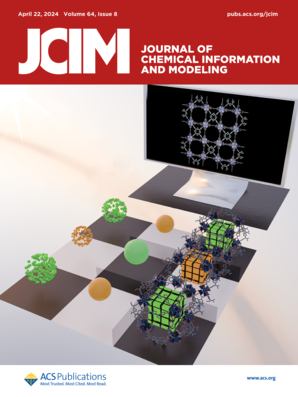EVOLVE: A Web Platform for AI-Based Protein Mutation Prediction and Evolutionary Phase Exploration.
IF 5.6
2区 化学
Q1 CHEMISTRY, MEDICINAL
引用次数: 0
Abstract
While predicting structure-function relationships from sequence data is fundamental in biophysical chemistry, identifying prospective single-point and collective mutation sites in proteins can help us stay ahead in understanding their potential effects on protein structure and function. Addressing the challenges of large sequence-space analysis, we present EVOLVE, a web tool enabling researchers to explore prospective mutation sites and their collective behavior. EVOLVE integrates a statistical mechanics-guided machine learning algorithms to predict probable mutational sites, with statistical mechanics calculating mutational entropy to accurately identify mutational hotspots. Validation against a number of viral protein sequences confirms its ability to predict mutations and their functional consequences. By leveraging statistical mechanics of phase transition concept, EVOLVE also quantifies mutational entropy fluctuations, offering a quantitative foundation for identifying Variants of Concern (VOC) or Variants under Monitoring (VUM) as per World Health Organization (WHO) guidelines. EVOLVE streamlines data upload and analysis with a user-friendly interface and comprehensive tutorials. Access EVOLVE free at https://evolve-iiserkol.com.进化:一个基于人工智能的蛋白质突变预测和进化阶段探索的Web平台。
虽然从序列数据中预测结构-功能关系是生物物理化学的基础,但确定蛋白质中潜在的单点和集体突变位点可以帮助我们在理解它们对蛋白质结构和功能的潜在影响方面保持领先地位。为了解决大序列空间分析的挑战,我们提出了EVOLVE,这是一个网络工具,使研究人员能够探索潜在的突变位点及其集体行为。EVOLVE集成了统计力学指导的机器学习算法来预测可能的突变位点,并结合统计力学计算突变熵来准确识别突变热点。对许多病毒蛋白序列的验证证实了其预测突变及其功能后果的能力。通过利用相变概念的统计力学,EVOLVE还量化了突变熵波动,根据世界卫生组织(WHO)的指导方针,为识别关注变量(VOC)或监测变量(VUM)提供了定量基础。EVOLVE简化了数据上传和分析,具有用户友好的界面和全面的教程。可在https://evolve-iiserkol.com免费访问EVOLVE。
本文章由计算机程序翻译,如有差异,请以英文原文为准。
求助全文
约1分钟内获得全文
求助全文
来源期刊
CiteScore
9.80
自引率
10.70%
发文量
529
审稿时长
1.4 months
期刊介绍:
The Journal of Chemical Information and Modeling publishes papers reporting new methodology and/or important applications in the fields of chemical informatics and molecular modeling. Specific topics include the representation and computer-based searching of chemical databases, molecular modeling, computer-aided molecular design of new materials, catalysts, or ligands, development of new computational methods or efficient algorithms for chemical software, and biopharmaceutical chemistry including analyses of biological activity and other issues related to drug discovery.
Astute chemists, computer scientists, and information specialists look to this monthly’s insightful research studies, programming innovations, and software reviews to keep current with advances in this integral, multidisciplinary field.
As a subscriber you’ll stay abreast of database search systems, use of graph theory in chemical problems, substructure search systems, pattern recognition and clustering, analysis of chemical and physical data, molecular modeling, graphics and natural language interfaces, bibliometric and citation analysis, and synthesis design and reactions databases.

 求助内容:
求助内容: 应助结果提醒方式:
应助结果提醒方式:


